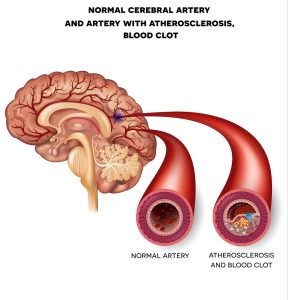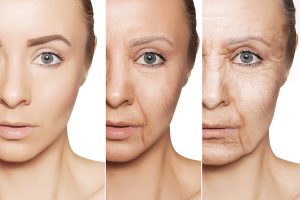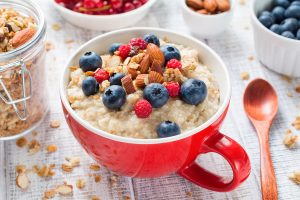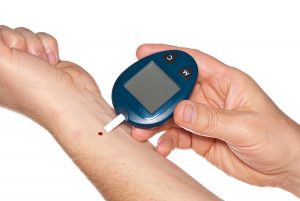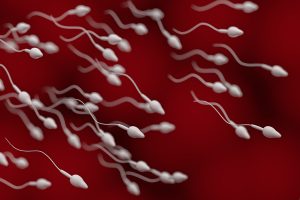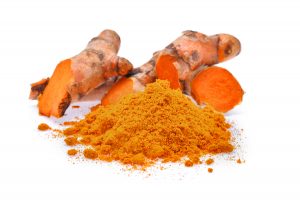People often wonder where does fat go with weight loss? This question recently came up in a CNN conversation. The answer was originally researched by Dr. Ruben Meerman and Professor Andrew Brown.
Dr. Meerman is an assistant scientist at the University of New South Wales and author of “Big Fat Myths: When You Lose Weight, Where Does the Fat Go?” Professor Brown is the head of the School of Biotechnology and Biomolecular Sciences at the same university.
When you lose 1 kilogram of fat, where does fat go with weight loss?
The interesting answer to this question is that fat gets metabolized. Dr, Meerman and Prof. Brown pointed out that originally Leifson et al. answered this question who used heavy oxygen and found out that this was metabolized into heavy water.
Technically these experiments are fairly complex, but they allow the researchers to see exactly where the body incorporates these chemicals and where they end up with breakdown of fat. The BMJ paper describes that the breakdown of 1 kg of fat follows the following pattern: It breaks down into 0.84 kg of CO2 (carbon dioxide) and 0.16 kg of H2O (water). In other words, the lungs are the primary organs that get rid of fat and the kidneys excrete the water. There is a bit of extra energy in this chemical reaction as well, which dissipates through the skin and through exhaled air.
What did health professionals think where the fat would go?
The health professionals were doctors, dieticians and personal trainers. About 65% of them thought fat would evaporate into energy/heat. About 10% thought fat would end up in the feces. 5% thought fat would turn into muscle. Another 5% thought fat would turn into sweat or urine. 8% were correct that fat would become CO2 and H2O. 7% said they did not know.
The chemistry of fat deposits and metabolizing fat
The body deposited triglycerides from the liver metabolism of sugar and fatty acids into fat cells and stored them as oleate (C18H34O2), palmitate (C16H32O2), and linoleate (C18H32O2). Part of this are many chemical reactions, including a number of enzymes. These fatty acids form esters and turn into gigantic molecules with this chemical formula: C55H104O6. The BMJ paper further says that an overall chemical description of metabolized fat would look like this:
C55H104O6+78O2→55CO2+52H2O+energy. In plain English it means that 1 molecule of fat ester (from fat storage) is metabolized together with 78 molecules of oxygen. This results in 55 molecules of carbon dioxide, 52 molecules of water and energy.
Fat turns into carbon dioxide and water
Based on this chemical reaction a calculation of the breakdown of fat into carbon dioxide and water was possible. The surprising result is that 84% of fat becomes carbon dioxide and only 16% of fat becomes water. We exhale the carbon dioxide from our lungs and it is mostly the kidneys that excrete the water. People who lose weight are aware that they have to urinate more often. But they do not notice that they get rid of a lot of carbon dioxide, as this is a subtle process.
Some observations from the fasting mimicking diet
The fasting mimicking diet (FMD) was at the center of the most recent anti-aging conference in Las Vegas I attended. This was the 25th Annual World Congress on Anti-Aging Medicine in Las Vegas, Dec. 14-16, 2017. Late in December 2017 I started 5 days of FMD and have just completed my 4th round of it (FMD is done 5 days out of each month). My main interest in doing this is to prevent heart attacks and strokes and I like the idea of stimulating telomeres for anti-aging and increasing stem cell production. See more details under this link.
Personal experience of fasting mimicking diet
I keep meticulous records of my body measurements using daily body composition scales, which I record in a booklet. Between March 23, 2018 and March 28 I lost 1.5 kg from 64.8 kg to 63.3 kg. Fat composition was reduced from 14.1% to 12.2%. Visceral fat was reduced from 6% to 5%. My muscle percentage rose from 38.1% to 39.1%. The basic metabolic rate was 1471 Calories on March 23 and went down to 1449 Calories on March 28. My body mass index went from 22.0 to 21.5.
I definitely noticed the frequent urination, something I had noticed in the past in 2001 when I lost 50 pounds over 3 months. Of course it is understandable when you reduce your daily calorie intake to 600 Calories per day that you will lose this amount of weight. People have different metabolisms. It may be that you won’t lose as much as I did.
What causes mainly weight loss?
There are many people who think that extra exercise would help you lose weight. But a publication has established that only about 8% of weight loss is due to exercising. 92% of weight loss is due to dieting.
Regular exercise is important for conditioning of your lungs, heart, muscles and joints. But to keep things in balance a reasonable diet, like a Mediterranean diet, should also be part of the regimen.
Sugar overconsumption
The obesity wave in the US started to take off between 1976 and 1980. 40 years later it is still rising. It is interesting to note that both wheat flour and sugar consumption in the US were increasing parallel to the rising obesity figures. In the 70’s the old-fashioned wheat has changed into the force hybridized Clearfield wheat, which is now 100% of the commercially available wheat. Clearfield wheat contains 7-fold higher gluten amounts than the old-fashioned wheat that your grandparents consumed. Gluten stimulates your appetite, so you crave more wheat and you crave more sugar. This becomes a vicious cycle.
Excess calories are stored as fat
The liver metabolizes sugar from regular food and from processed food into triglycerides and LDL cholesterol (the bad cholesterol that plugs up arteries). As I mentioned above, the body stores any excess triglycerides as fat and deposits the excess into fatty cells. You see from this that essentially sugar and wheat end up as fat deposits. I suggest you change your food intake into eating sensible food with fewer calories. Start by eliminating most of your sugar, wheat and processed food intake. This will help you to melt fat away as I showed with an example of my 5 day FMD.
Conclusion
I reviewed facts about the chemistry of melting fat away. The question is where does fat go with weight loss? In the process of weight loss fat breaks down into carbon dioxide and water. I also documented how you can lose fat in just 5 days (1.1 kilogram) on a 600-calorie diet and reduce the body mass index from 22.0 to 21.5.
Most people do not recognize the importance of watching their diet to achieve weight loss. 92% of weight loss occurs as a result of dieting. Wheat and sugar consumption have a direct connection to the obesity wave that started between 1976 and 1980. I have cut out all wheat, all sugar and all processed food in 2001. This allowed me to lose 50 pounds then and my body mass index today is 21.5. It can be done, even if you are 73 years old.

